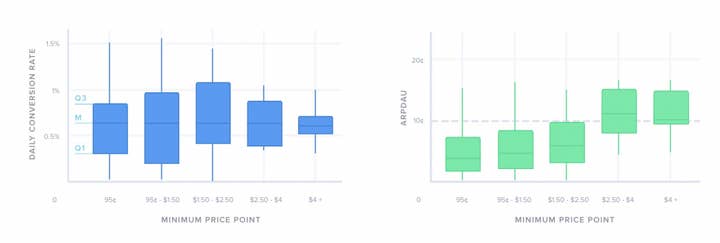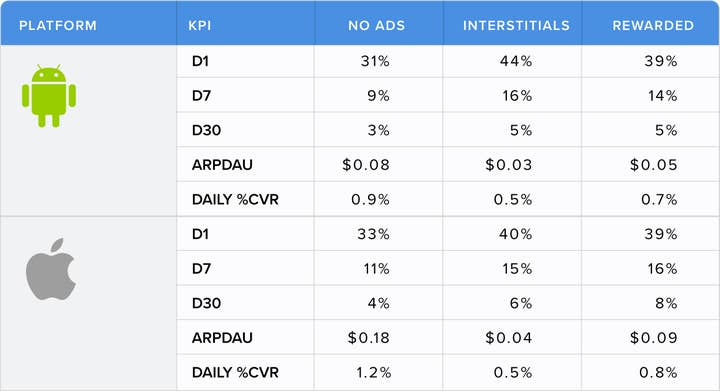Why only the brave make money in F2P
DeltaDNA shares the latest insights from its analytics platform
According to research firm Newzoo, this year, mobile games revenues are set to surge by 19% year-on-year to $46.1 billion. Therefore, you'd be forgiven for thinking that gaming's most lucrative segment was in rude health. So why isn't every mobile games developer rolling in cash?
In reality, it's only a handful of juggernaut publishers that are actually making the big bucks, as a staggering 94% of App Store revenue is generated by the top 1% of publishers, like Supercell, Machine Zone and King Digital.
These numbers clearly won't make comfortable reading for the majority of publishers, which begs the question: "Why are so many games failing to stake a claim to their share of the pot, when there's never been more money being spent on mobile games?"
"Trying to effectively balance the player experience with the need to monetize through ads and in-app purchases (IAP) is a daily struggle"
Making money from free-to-play games has always been a granite-tough business for many developers. Trying to effectively balance the player experience with the need to monetize through ads and in-app purchases (IAP) is a daily struggle.
One of the main reasons that games don't make money is because developers just aren't confident enough when it comes to IAP pricing and ad frequency. Too many developers just want their players to have a great player experience, which on one hand is commendable but if it isn't paying the bills then something needs to change.
Wake up and smell the money
Developers have always felt uneasy about packing their beloved creations full of ads and intrusive monetization mechanics. Obsessed with retention, most developers tend to be overly cautious when it comes to serving ads and pricing IAPs.
While this might be good for the player, if only 2% of players actually spend money on IAPs, what's the point of great retention figures if your game's still not making money?
Most F2P games aren't profitable
In fact, only 30% hit the 10c Average Revenue Per Daily Active User (ARPDAU), or $1 Lifetime Value (LTV) - a figure needed to start being close to making money.
To achieve strong monetization you first need a great game. That's key, but if you're still not making money, it's time to step up to the plate and get serious about generating some solid revenue.
Are you sitting comfortably? Here's how.
Increase the price of your IAPs
In a bid to preserve retention, developers often price their purchases too low, yet within a game, there is a very inelastic relationship between price and demand. It's obvious when you think about it, each game is a monopoly, there's no competition.

A successful game is all about striking the right balance and your IAP strategy can fail if you are not daring enough. Our data shows that games that charge twice as much, tend to make roughly twice as much money. As you can see in the chart above, median conversion hardly changes when the minimum price point is increased, but the ARPDAU actually increases dramatically, and price points lower than $2 are shown to devalue games significantly.
Sell, sell, sell!
Getting players to make a single purchase is good, but it's actually very difficult to monetize successfully with IAP, unless you can inspire an average of three IAP payments in each spender's lifetime.
For mobile games on deltaDNA, the first transaction on average is worth $5.20. This increases to $9.10 for the second and continues to increase all the way to $23 for the tenth transaction, as the chart below illustrates:

To achieve this, you need a game with a core spending loop where no matter how far the player has progressed, there will still become a need to spend again. If your game only builds to a single IAP payment, the chances are it won't be enough. Games utilising depleting resources or mechanics, which inspire the user to collect or acquire specific items to enable progression, work well.
You also need to have a minimum of 5% of spenders being Whales. Whales are defined here as players who pay more than $100/month. It's worth noting, that only 16% of games achieve all these measures.
Serve more ads
We know from our In-Game Advertising Study that developers see ads as a necessary evil, yet more than half (52%) feel unsure whether they are adopting the right ad strategy for their highest monetising F2P game, while only 3% describe their approach to advertising as 'effective'.
We also know that 98% of players won't spend on IAPs, while it's also common for between 40% and 50% of players to leave a game after just one session. Yet many developers still only serve one ad or less per session, which is a reason why ad revenue only accounted for 35% of total game revenue last year.
The problem is that few developers have the technology to be able to analyze how ad frequency and IAP pricing impacts the player experience. Without this knowledge, they let fear take over and adopt an ultra-cautious approach, but are these fears justified?
"If ads aren't properly measured and applied, they run the risk of cannibalising IAP expenditure and conversion"
Last year a team from the University of San Francisco used anonymized data from the deltaDNA platform to examine the relationship between ad frequency and retention. The study discovered that there was no evidence of first session ad density affecting retention.
Nick Ross, Assistant Professor, University of San Francisco stated: "There is no evidence to suggest that the density of ads, shown by a game in the first session, affecting whether a player returns for a second session."
In fact, the deltaDNA Insight Team took a look at a sample of platform data to determine the effectiveness of advertising on a game's ability to monetize. As can be seen below, if ads aren't properly measured and applied, they run the risk of cannibalising IAP expenditure and conversion.

Caution doesn't pay the bills
The big monetization problem developers still face is their inability to analyze how different elements of monetization impact the player experience. The natural tendency is to be cautious and overly generous. But the harsh reality is that caution and generosity doesn't pay the bills.
You can often have sub-standard monetization in a good game, but you can't have successful monetization in a sub-standard game, so if your retention KPIs are strong you can afford to take an assertive approach with your monetization.
For more information on DeltaDNA, click here.